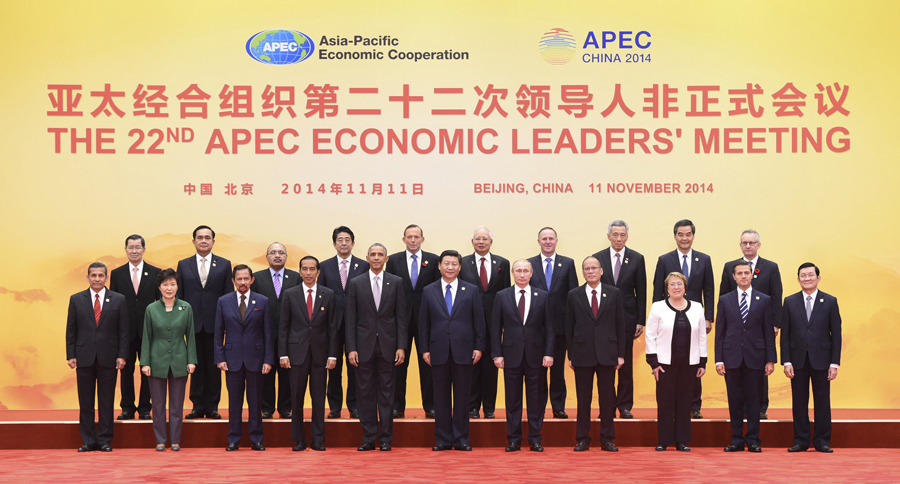APEC eyes ‘new normal’ economic growth model

Leaders and representatives gathered for official photos after the meeting.
“Promoting Innovation Development, Economic Reform and Growth” was one of three topics at the 2014 Asia-Pacific Economic Cooperation (APEC) meeting in Beijing. It aimed to explore a new approach, impetus and path of economic growth amid a period of growing challenges for the Asia-Pacific region.
After the Global Financial Crisis of 2007-08, Asia-Pacific economies represent the “new normal.” In future, Asia-Pacific economies will undergo an economic slowdown. Most economies, especially large ones including China, Russia and the US, in addition to developing ones, including Thailand and Mexico, have undergone an economic slowdown since 2008.
The emergence of the “new normal” reflects that traditional impetuses, including large-scale investment, can no longer support regional economic growth. The unsustainable status of this traditional growth pattern will push most Asia-Pacific economies into pushing structural reforms.
Therefore, constructing an open economic development pattern with the characteristics of development, innovation, growth and interaction has become a significant factor for the Asia-Pacific economic recovery. Reform is the main impetus for transforming the economic development pattern. Currently, there are nearly 900 million people mired in poverty within the Asia-Pacific region, and the construction of a social security net, including social insurance and medical reforms, will depend on consumption potential.
Innovation is at the core of transforming the economic development pattern. Advancing technical innovation and improving the role of the “green” industry, new energy and energy efficiency have earned basic consensus among Asia-Pacific economies, which aims to guarantee future sustainable development.
In addition, boosting infrastructure construction, advancing integration and improving financial risk management are also vital to support transformation of the economic development pattern.
As a significant platform of conducting collective action, APEC has made strategic growth adjustment an annual priority since 2008. The bloc has urged its members to step up innovation and reform to achieve new impetus. In recent years, a number of members have engaged in strengthening reform and adjusting the economic development strategy.
Some APEC members including the US, Japan, China and South Korea have incorporated “green” investment into the package for stimulating economic growth.
Meanwhile, mutual support between APEC members is also increasing. Bilateral trade between China and the Association of Southeast Asian Nations (ASEAN) will reach $500 billion in 2015. China will also issue a large number of special loans to expand investment and industrial cooperation.
The 2014 APEC Trade Ministers’ Meeting focused on conducting cooperation on economic reform, innovation-driven growth and urbanization to maintain the leading role of the Asia-Pacific region within the new round global economic growth.
The author is a research fellow at the National Institute of International Strategy at the Chinese Academy of Social Sciences.
